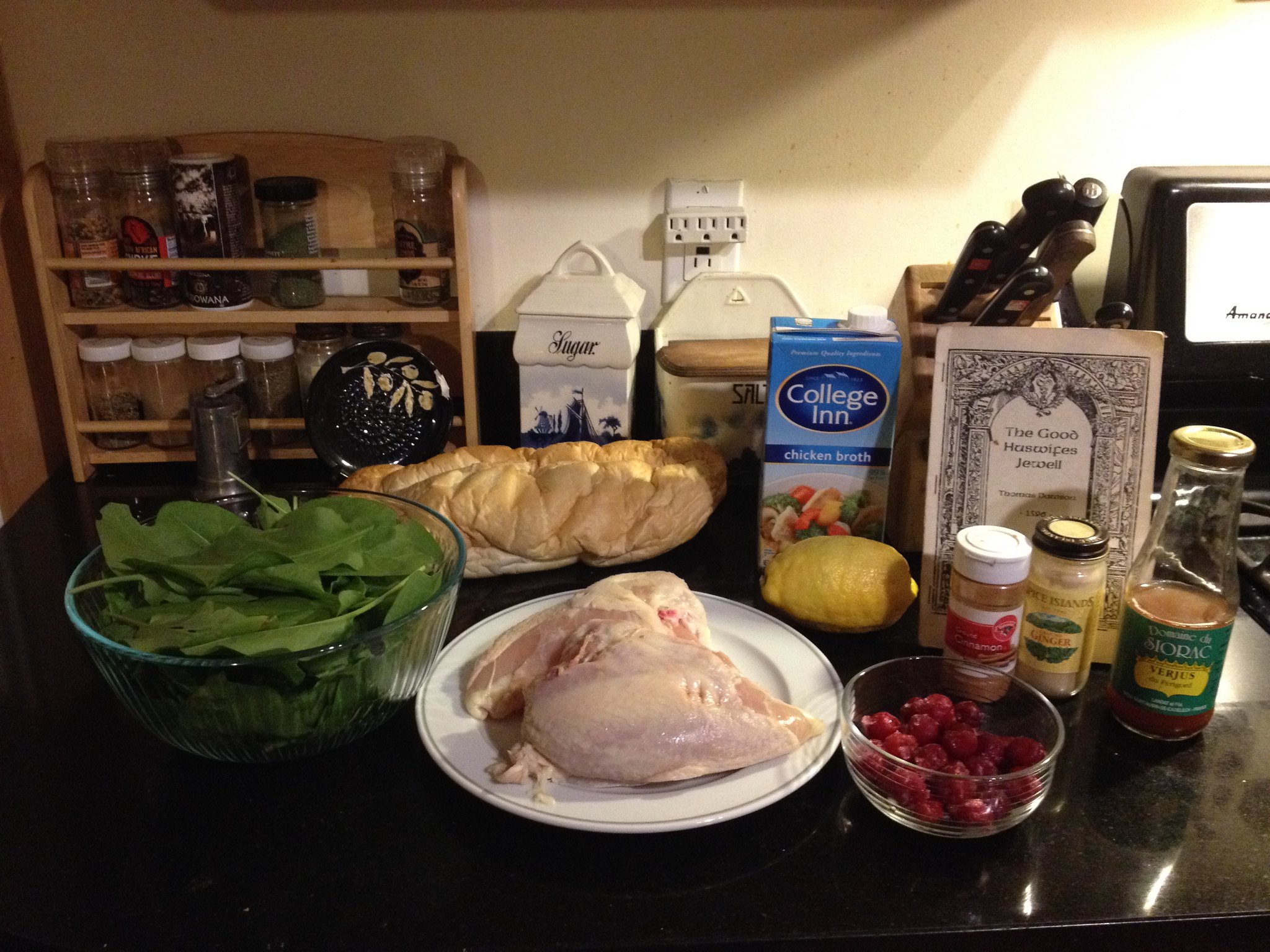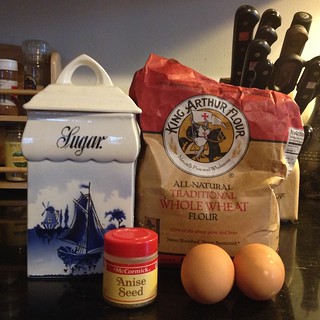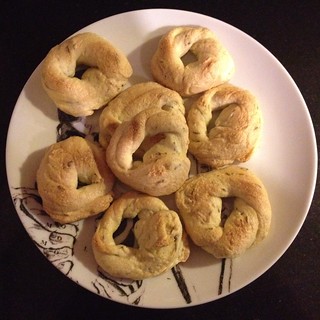Dear Constant Reader,
[I wrote this in January 2020 and apparently it’s been sitting in my drafts all that time. It’s been well over a year since I shared a historic recipe with you and most of what I’ve been cooking this year is from the 1914 project. I can’t find a picture of the finished cake so you’ll just have to imagine it.]
It has been a while since I did any historic cookery. When our local medieval/Renaissance cookery group was having a joint meeting with a gaming group, that was enough to get me thumbing through my Elizabethan cookbooks. I wanted to bring something that didn’t need any cooking on site and was somewhat seasonal. It’s wintertime, which made me think of fruit and spice cakes.
To Make a Cake
Take a peck of flower, and fower pound of currance, one ounce of Cinamon, half an ounce of ginger, two nutmegs, of cloves and mace two peniworth, of butter one pound, mingle your spice and flower & fruit together, put as much barme as will make it light, then take good Ale, & put your butter in it, all saving a little, which you must put in the milk, & let the milk boyle with the butter, then make a posset with it, & temper the Cake with the posset drink, & curd & all together, & put some sugar in & so bake it.
Elinor Fettiplace’s Receipt Book
Cakes in the 16th and 17th centuries were not much like today’s cake. They were raised with barm, which is the yeast used for making ale, rather than baking powder, which wasn’t invented for a couple of centuries. The results are more like bread than what we think of as cake today. I use yeast with a little beer added for flavor.
The above recipe would make a giant cake, as a peck of flour is eight quarts of flour or about 37 cups. I divided all the ingredients approximately by eight to make a more manageable cake. Since I have no idea how much mace or cloves a penny bought at the time, I just added the spices to my liking.
The big mystery here was these instructions “then take good Ale, & put your butter in it, all saving a little, which you must put in the milk, & let the milk boyle with the butter, then make a posset with it, & temper the Cake with the posset drink, & curd & all together”. My read of it is to take ale and add most of the butter to it. Put the rest of the butter into the milk and bring the milk to a boil. Then add the milk to the ale (a posset is a beverage made with warm milk curdled with alcohol) and add it to the cake mix. Why split the butter like that? I might understand if you worked part of it into the flour and melted the other part, but this baffles me. It all melted when I added the warm milk to the ale. Any thoughts?
The end result is a pleasantly-spiced, not too sweet fruit bread.
4 2/3 cups all purpose flour (I like a mix of all-purpose and whole wheat)
8 oz. currants
2 tsp ground cinnamon
1 tsp ginger
1/2 t mace
1/4 t nutmeg
pinch cloves
2 oz. butter (1/2 stick)
1 cup ale (I used a winter warmer)
1 cup milk
1 packet yeast
1/4 cup sugar
Mix together the flour, currants, and spices in a large bowl. Pour the ale and half the butter into a small bowl. Bring the milk and the rest of the butter to a boil in a sauce pan. Let the milk cool to body temperature (if you put a drop on the inside of your wrist, it should feel neither hot nor cold), add to the ale along with one tablespoon of sugar and the yeast. Mix the rest of the sugar into the dry ingredients.
When the yeast bubbles (about 10 minutes) add the wet ingredients to the dry. Mix until well combined. Knead a few times on a floured surface. Pat the dough into a ball. Grease the bowl and put the dough into it. Cover with a dish towel and let rise in a warm place until doubled.
Punch the dough down and place in a greased pan. I used a 9″ round cake pan. Cover and let rise again.
Bake at 400°F for half an hour. You can sprinkle it with coarse sugar when it comes out of the oven or make a glaze with powdered sugar and rosewater and pour over the warm cake.

These writings and other creative projects are supported by my 16 Patrons. Thank you so much! To become a Patron, go to my Patreon page. Or you can just tip me if you liked this.


 These writings and other creative projects are supported by my 14 Patrons. Thank you so much! To become a Patron, go to
These writings and other creative projects are supported by my 14 Patrons. Thank you so much! To become a Patron, go to 






